In this article you will learn a little more about archeology and the necessary tools to undertake an adventure.
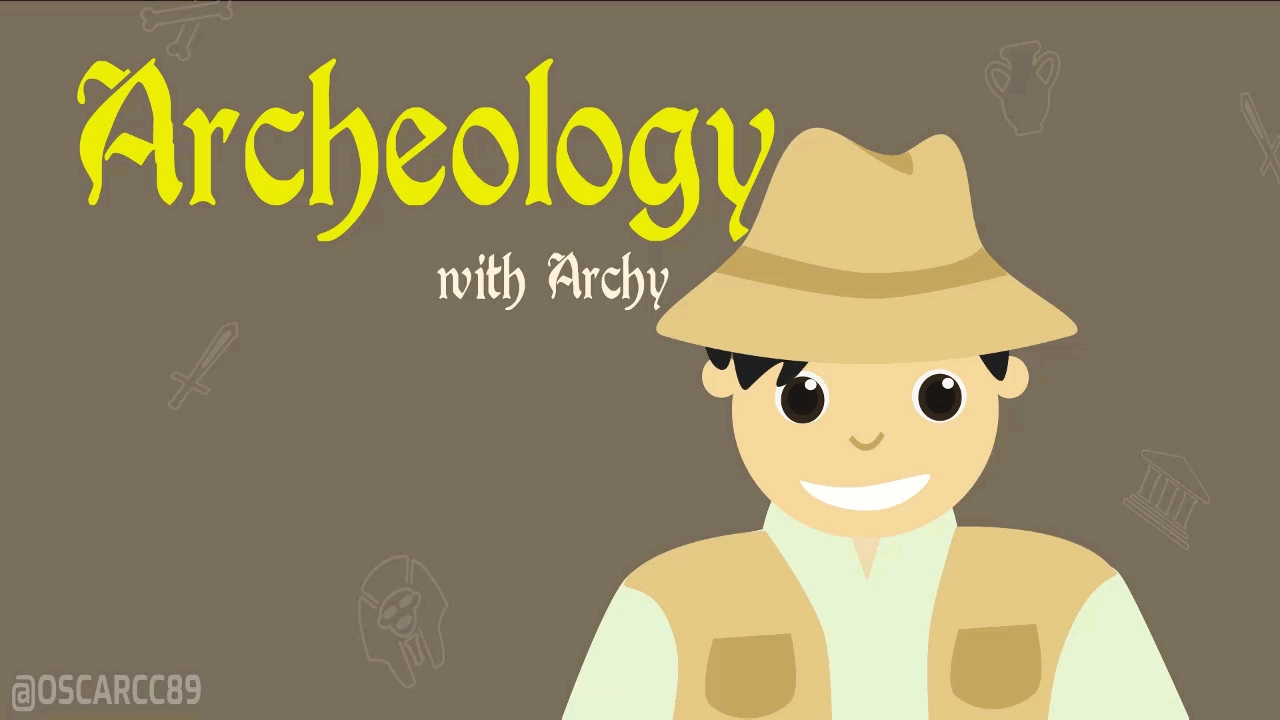
What does an archaeologist do?
The archaeologist collects information from the material remains of the past such as religious buildings, objects, cities or tombs and get to know their beliefs, their ways of life, the diseases they suffered or even their food.
Archaeologists investigate homes to obtain information about their social organization, they also try to find out what men and women used to eat in the past, they also want to know how they dress and study the tools used by their ancestors to know their level of development technical.
Much information is obtained from all the objects found in an archaeological site, which can be ceramics, remains of buildings, mosaics, weapons, seeds, tools, coins, bone remains or decorative materials. Most of the objects that archaeologists work with have been buried for hundreds or thousands of years.
Let's imagine that we have a village 11 centuries BC a.C. A little over 100 people live there, but due to a prolonged drought they had to leave their home and go elsewhere. Over the years, the houses deteriorated and were covered by layers of sediment.
Scene 1.

Some centuries later, other inhabitants came to this place because of their wealth of food. They founded a new village on the ruins of the previous town. Over time the animals died and the inhabitants left in search of new horizons.
Scene 2.

Hundreds of years later, on it the Romans built a new city with its walls, stone paths, aqueducts, among other buildings. For centuries the war and the disease ended the city.
Scene 3.
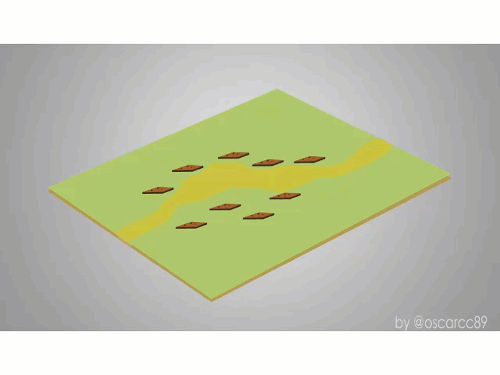
Over time, new towns and communities conquered those lands until finally our current cities were built on all of them.
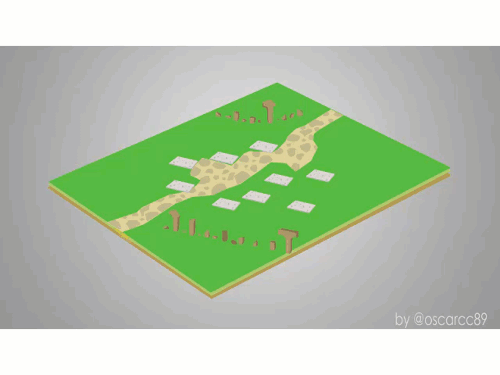
When archaeologists begin digging they always discover the facts in reverse of how they were deposited. Following the scenarios described above, they would position themselves in this way.
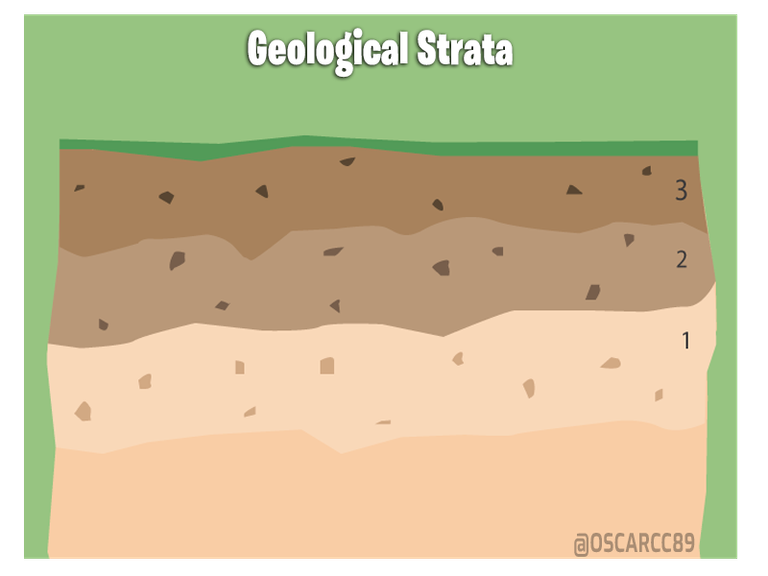
An archaeological site is formed by infinities of layers of sediments called geological strata, which determine different moments or historical periods.
What can we find in an archaeological site?
From human bones archaeologists are able to discover the age at which that person died, the diseases he suffered and his sex.
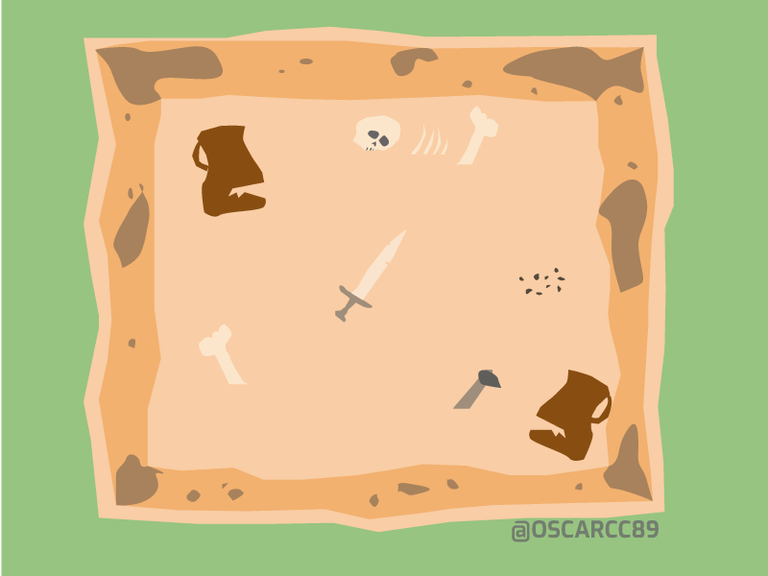
By studying the buildings they discover the techniques they used in their construction, the level of wealth of the population and how they organized themselves socially.
Analyzing the ceramics they are able to know the commercial contacts they had with another population, know the techniques they used in their preparation, and get to know what they were used for.
With the coins the archaeologists can find out if there was a war in the town and when it happened, to know the wealth of the town and to determine the commerce with other towns or nations.
With the seeds, it is possible to know the climate that existed at a certain time, to know if a village practiced agriculture and if food remains appear they can know their diet.
By studying the tools an archaeologist can know the level of technological development of a town, and for what they were used.
What tools should we take to a deposit?

The spatula or scraper is the most used tool in a field. With it we can define a section, clean or simply remove the remains of a small hole. The beak and the shovel go hand in hand, they are like brothers. The beak can be used to loosen a very hard part of the earth, in addition to loosening you can also define a large section of the ground. With the shovel you pick up excess dirt or waste, and transfer these into the wheelbarrow.
Among other objects that can help you explore a site are: Hammer, Brushes, Brush, Chisel, Compass, Camera, Flashlight, Gloves, Helmet, Magnifying glass, Tape measure. These are some of the things an archaeologist can take to a site.
An archaeologist must know how to draw the findings and draw plans of places and excavations. Although you do not necessarily have to be a topographer or a mathematician, at least you must know the basics of using the tape measure, the compass, the leveler and the theodolite.
You do not necessarily have to be an archaeologist to discover an object from the past, you may one day stumble upon an object that is more than 4000 thousand years old. Good Luck!
I hope you liked this article about archeology.
The animations and images were created by the author of this publication, with Adobe Photoshop, Illustrator and After Effects.
This work is licensed under a
Creative Commons Attribution 4.0 International License.
Posted from my blog with SteemPress : http://oscarcc89.vornix.blog/2018/07/19/the-world-of-archeology/
We do not really know that we are standing, in those layers there is a lot of history.
Excellent work